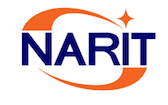How does the TRT dynamic scheduling work?
The scheduler takes into account the priority score assigned by the TAC, visibility, air mass, and cadence requirements to rank each program. The observation queue will be visible to all users at any given time; the schedule is re-generated dynamically, thereby allowing new jobs to be submitted in real-time.
How do I observe with the TRT?
PI of approved proposals will receive an account with allocated time at the corresponding TAC-assigned priority. PI can then submit their job at their convenience.
How much freedom do I have in scheduling observations?
Observers are requested to be as specific as possible in the proposals. However, small modifications — in the spirit of the original proposal — are allowed. Target and observing setup can be modified by the PI during the scheduling stage, as long as they are consistent with the original science proposal. Deliberate deviation from the originally proposed science (or deliberate abuse of job priority) is a ground for account suspension.
What is supported?
- dynamic scheduling
- cadenced observations
- automatic acquisition of calibration frames (flat, dark, bias)
- automatic dithering
What is not yet supported in this call?
- fixed-time observation (anticipated in future CfP’s)
- non-standard readouts (e.g., sub-frame, fast readout)
- focus offsets
- automatic reduction and WCS solution
- automatic time compensation for bad weather
- batch job submission
- bright object avoidance. Please watch out for the moon. Saturating the detector with the moon, its proximity, or bright planet will lead to account suspension until bright object avoidance is implemented in the scheduler.
Is it possible to request a chunk of uninterrupted time?
No. However, if the science absolutely cannot be done in any other way except if a block of uninterrupted time is allocated, the TAC will consider allocating time at high priority in order to mitigate disruption. This depends on the quantitative demonstration of the necessity of uninterrupted time, e.g., with a simulation.
How do I calculate overhead?
The most significant overhead is the camera readout, about 20 s. Slew and offset time can be ignored in this call.
Proprietarity of proposal metadata and science products
- All proposal titles and abstracts will be public upon proposal acceptance; exposure metadata will be public upon observation (cf. HST, ESO, ALMA, etc.)
- Science products will be public in a year from exposure time.
- Telescope queue will be visible to all observers; users are encouraged to monitor the queue. If you see any scheduling irregularities, please report to the TAC and OPD (contact address below).

